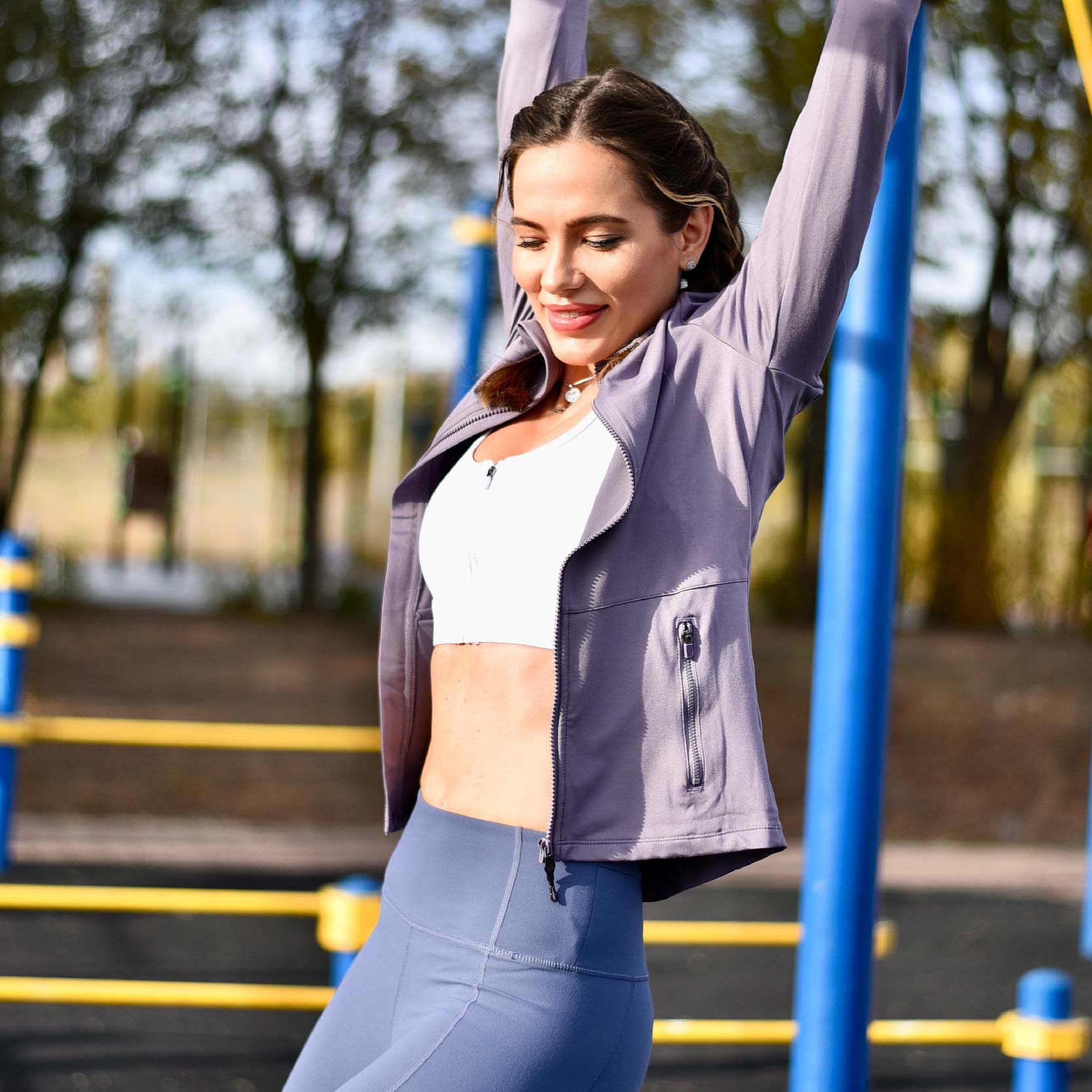14 Shoulder Mobility Exercises and Stretches

There are particular exercises and stretches that might be very useful if you have shoulder stiffness, are recuperating from an ailment, or wish to improve the power of your shoulder tissues.
Incorporating various shoulder stretches into your general training routine may help you improve shoulder flexibility and mobility. These activities may also help you increase shoulder endurance, enhance shoulder movement, and avoid injury.
Continue reading to discover more about shoulder mobility exercises and stretches that can improve your physical strength and make moving your shoulders effortless.

What Causes Poor Shoulder Mobility?
Mobility issues touch many people, not just the elderly. Shoulder mobility declines with age, but other circumstances can contribute to impaired mobility, resulting in stiffness and pain. Various clinics offer treatment alternatives to increase mobility; with professional help, you can achieve a broader range of motion.
We are not required to move our shoulders stretched out to their full length because we spend a significant portion of our day in a relaxed front posture. The muscles will eventually weaken, and the shoulder will get trapped in its normal posture.
Other causes of limited shoulder mobility include:
Unbalanced muscle groups, compression of the shoulders, body imbalance, or overindulgence

What Limits Shoulder Flexion?
A well-trained medical professional or therapist can analyze shoulder mobility and identify if the range constraint is due to ligament difficulties, muscles, bones, or something more serious, such as shoulder joint adhesions or arthritis.
If the bicep muscle cannot move adequately either up or down, and the humerus cannot glide straight down when it comes into touch with the acromion, the arms may not move above that length unless the body completely sides bends off the rising arm. The humerus will occasionally begin to spin before it should.
It is also a poorly functioning process since the scapula reaches its maximum point of upward spin before the shoulder joint. You may not be capable of lifting your arm to its limit. The restriction is usually not uncomfortable; you will not be able to stretch your arm any farther.
The muscles that drive the shoulder might also inhibit its ability to move. When you have a weary shoulder, its movement range is limited, which is typically uncomfortable. The tendons and ligaments can also be troublesome.
Scar tissue from an accident or operation on or within the joints can cause a restriction in movement range. Due to the complexity of the healing, scarred tissue may rip. Micro tearing can be unpleasant and acute, triggering the inflammatory reaction to begin mending.

14 Shoulder Mobility Exercises and Stretches
Here are the best shoulder mobility exercises to help you out;
01: Standing Arm Swings
This is an excellent dynamic workout for increasing blood circulation to the shoulder joints.
This workout can enhance the flexibility and mobility in your shoulders when you do it as an aspect of a warm-up before completing upper body workouts.
To complete this exercise:
·Maintain a lofty posture with your arms spread at your sides.
·Squeeze your spine and stretch your arms forward as far as they will go. Ensure that you raise your shoulders.
·Repeat by returning your hands to the beginning position.
·Perform this motion for one minute.
02: Shoulder Pass-Through
The shoulder pass-through technique improves joint range of motion while also stimulating the arm and shoulder muscle strength. You will need a stick, or PVC conduit, for this exercise.
To complete this exercise:
·Place your legs shoulder-width apart while your hands stretch in front of you.
·Use an outstretched arm grip to grip the PVC conduit or a stick. Broaden your arms outwards from your shoulders. Ascertain that the pipe is aligning with the floor.
·Tighten your spine and gently raise the rod above your head while keeping your arms up and straight. Do not force anything; ensure you are comfortable.
·Maintain the posture for a few seconds.
·Get to your starting point and repeat five times.
03: High-To-Low Rows
Hi-to-low rows are a shoulder mobility exercises with band that push the back and chest muscles, providing significant strength to the shoulder complex. You will need a tension strap for this workout. You may also do this activity at the gymnasium with a cardio machine.
To complete this activity:
·Attach an elastic band to an item over your shoulders.
·Kneel with one knee and hold the strap with the other hand. You can place another hand by your side.
·Pull the strap towards you while maintaining a straight torso and arm. Concentrate on pressing your neck and shoulders together.
·Revert to your starting point and repeat.
·Perform four sets of ten reps on each side.
04: Reverse fly
The reverse fly technique stimulates the back and chest muscles, which offers a lot of strength to the shoulder. You will need a set of lightweight dumbbells for this workout.
To complete this strength activity:
·In each hand, grab a dumbbell.
·Place your legs apart with your knees slightly bent.
·Lean forward and relax your core. Maintain a straight back and outstretch your arms.
·Lift your arms and move them away from you. Concentrate on pressing your neck and shoulders together, and stop once you reach shoulder length.
·Return to the original posture gently and repeat.
·Perform three sets of ten repetitions.
05: Rotation with Dumbbells
Rotating with a dumbbell prepares the shoulder for upward and flinging actions. Most athletes love this stretching technique, especially those who raise their hands and spin outwardly throughout their sport.
To complete this activity:
·Hold a light dumbbell in your right hand while standing with your legs apart.
·Stretch your arm to shoulder level with your elbow. Let your front hand face the floor.
·Swing your shoulders to elevate your arms and body weight so that your hands point towards the sky.
·Return to the original position gently and repeat the exercise before switching sides. You should repeat at least three sets with each arm before switching.
06: Cross-Arm Stretch
Cross-arm stretching activates the scapular muscles. You will feel it in your shoulders if you do a proper cross-arm stretch.
To do this stretch, first:
·Start by standing with your legs apart, slightly wider than shoulder width, and lifting your right arm somewhat higher than shoulder level.
·Position the other hand on your right elbow and gradually move your right arm across your body, supporting it with your left hand.
·Maintain this posture for at least 30 seconds.
·Repeat the step on the other side.
Repeat the activity with each side three to five times.

07: Sleeper Stretch
Sleeper stretch is a perfect technique to work on your shoulder internal rotation. This exercise is the perfect way to help you heal faster when struggling with a shoulder problem or treatment.
Although you can practice this stretch as a routine exercise for your general health, if you suffer from an injury, focus on the afflicted side.
To do this stretch, first:
·Lie on your afflicted side. However, you can decide which side to begin with if you are not injured or in pain. Pile your shoulders below you.
·Stretch your elbow outwards from the shoulder while bending your arm with your fingers pointing up. This becomes your starting point.
·Gently move the injured arm toward the ground with the healthy arm. Once you feel a stretch on your afflicted shoulder, you should stop.
·Maintain this posture for at least 25 seconds.
·Repeat three times before switching sides.
08: Doorway Stretch
The doorway stretch technique helps to relax your chest separately, focusing on each side; this is vital if you have some difficulty with one side of your chest. This stretch strengthens the sub-scapular tissues in your chest and enhances your shoulder motion range.
To carry out this exercise:
·Place your arms and elbows at a right angle in a doorway. While standing with your legs spread apart.
·Raise your right arm at shoulder level and rest your hand and arm on the entrance.
·Bend towards the stretch, feel the strain, and stop once you start feeling uncomfortable.
·Feel a stretch for a maximum of 25 seconds.
·Repeat on the opposite side; do this with each side at least three times.
09: Chest Expansion
Chest expansion is a great technique to relax your core muscles, expand your chest, and enhance your shoulder strength and flexibility. It also enables your lungs to enlarge and take more oxygen.
To do this stretch, first:
·Put your legs together and stand upright.
·Keeping your arms on your back, grip the length of the workout band with both hands.
·Hold the band to assist you in bringing your shoulders back together and opening your chest. This will make you gaze up at the ceiling.
·Maintain this position for 20–30 seconds.
·Repeat at least four more times.
10: Child’s Pose
Child's Pose is a fantastic technique to expand the shoulder joints into flexion and strengthen your trapezius deltoid muscles and lat tendons. This position can also help your back muscles.
To do this stretch:
·Kneel on a mat to complete this stretch. Check that your body is erect.
·Move your fingers forward gradually to outstretch your arm forward. Focus your eyes on the floor.
·Rest your head on the floor and lower your body to your thighs.
·Stay in this posture for four seconds.
·Repeat it five times.

11: Quadruped Shoulder Circles
You have probably done regular bear circles while standing. The advantage of executing this on your knees and hands is that even the ground provides little input, allowing you to adjust the pressure.
The following are the procedures for starting the first workout:
·Begin on your knees and hands, positioning your knees slightly behind your hips and your hands somewhat beneath the shoulders.
·Try shrugging your chest and shoulders up and down, towards your ears, back towards your buttocks, downwards, and finally toward your head, producing a lovely circle.
·Try to execute the circles in all directions first, and then go on to the activities involving moving shoulders.
·Once you have finished the first attempt, try doing it in circles before moving on to another activity.
12: L-Arm Stretch
This is one of the best stretches since it releases the flexor tendon and the shoulder well. It may seem strange, but experiment with establishing a suitable position that is somewhat easy for you.
To do this stretch:
·Begin by resting on your belly with either of your arms at your side. Extend the other arm over your chest, hand up, without dropping your shoulder too far.
·Bring your upper body down to the ground with your shoulder blades, providing a good strain on the shoulder joint.
·Alternate between stretching and posing while remaining in one position.
·Once you have found a suitable position, try stretching ten times before holding for thirty seconds. Repeat this process four times more.
13: Prone Bent Arm Chest Stretch
This stretch focuses on the shoulders, front, and chest. Work on your shoulders separately, focusing on each in succession.
To do this stretch:
·Begin with a prone pose, resting either hand on the ground or the other one bent at the elbow.
·Balance your weight and shift it to your hand, allowing your chest to stretch.
·Alternate between stretching and resting till you find a balance, then hold.
·Repeat at least ten times, holding for 25 seconds.
14: Clasped Hands Extension
This technique boosts our sense of safety. Holding hands in this manner optimizes the level of touch, which equals maximum ease. This is perhaps the most relaxing option. It replicates the touch of a helpful person better than the others.
People often find themselves in this position when they are anxious. You can also do this stretch while waiting for the doctor, during a tense financial bargaining session, following a barrage of criticism, and when doing shoulder mobility stretches.
When doing this stretch:
·Place the palm of one hand on top of the other. You can also do it by mild brushing. It is akin to holding hands, which gives a decent idea of what it signifies.
·Stretching the shoulder will help you avoid joint and muscle damage.
·Because the stretches described here are static, try practicing them after a training session or shortly after a warm-up that incorporates dynamic stretches.

Conclusion
Shoulder mobility exercises are a crucial element of any training schedule, whether you are an athlete, a fitness devotee, or just looking to improve the overall health, endurance, and flexibility of your shoulder joints and muscles. Movements and workouts for the shoulders can help you improve mobility, reduce stress, strengthen muscles, and prevent injuries. Consider practicing with a fitness instructor if you are unfamiliar with shoulder stretches and workouts. They can assist you in the moves with proper technique and execution.





